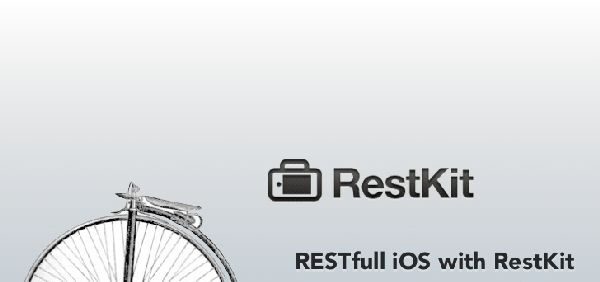If you want an Objective C Framework for iOS App Development platform then RestKit is your framework of choice with simple RESTful web services for interaction. This framework is pretty fast and you will enjoy using it as it is a mix of simple and clean HTTP Response and Request application programming interface with a strong object mapping system that will decrease the amount of programming code you have to write so as to get the functions implemented.
The main goal and objective of the RestKit iOS Framework is to provide the web developers with more opportunity to think on the aspects of their application data model so that they need not worry much about the details on sending the HTTP requests , parse the responses and build identification for the various remote resources.
Features of RestKit at a Glance
- RestKit iOS Framework has a huge core data support by providing integration with the Core Data Framework of Apple. The core data support lets RestKit to preserve the remotely loaded objects within the local store just similar to the primary data store or the fast local cache which will be synced at regular intervals with the cloud. RestKit will allow you natural property based traversal of the data model through the Core Data Associations. RestKit as well simplifies the process of querying use cases and configuring them.
- This framework is built on top of the NSURL Connection with an HTTP client. With a huge library of useful methods for scrutinizing various status codes and MIME types this framework makes it easy to submit form data by letting you provide a dictionary of parameters to the native params object to ensure multi part submission. The various methods supported are GET POST PUT DELETE, SSL & HTTP AUTH with a request queue to manage all the HTTP requests so that they become bandwidth efficient and memory efficient.
- When using RestKit you can be assured of framework level support with switching servers or environments for the reason that it makes use of resources paths and a base URL to help you switch servers quickly.
- RestKit ensures database seeding by allowing you seed a database by using a collection of data files. With this feature of RestKit you can submit your applications to App Store with a database in the App Bundle which can be used immediately.
- If you want to implement additional data formats in a transparent manner then there is a pluggable parsing layer which provides support for YAJL, SBJSON parsers.
- There is a powerful object mapping system that makes use of idiomatic key value coding process for defining and implementing the round trip (request-response) transformations amongst the native objective C class and the JSON. This elegant mapping system solves all the worries of an application programmer on the aspects of parsing by merely asking the framework to asynchronously fetch the remote resource & then call the delegate with the results. Reflection will be used on the various types of properties to provide mapping from the remote dates which are encoded as a string back to the NSDate Objects. Object Mapping is implemented through Serialization Mappings, Inverse Mappings, Simple Object Mapping and Mapping Relationships.
RestKit UI is implemented through forms Networked Tables and Static Tables making it a versatile framework for iOS app development. The miscellaneous helpers of the RestKit iOS Frameworks such as API Environment Switching, Reachability, Database Seeding and lots others make it a highly powerful iOS framework of the modern era. One problem that beginners are likely to face with the usage of Rest Kit framework is the unorganized documentation.
